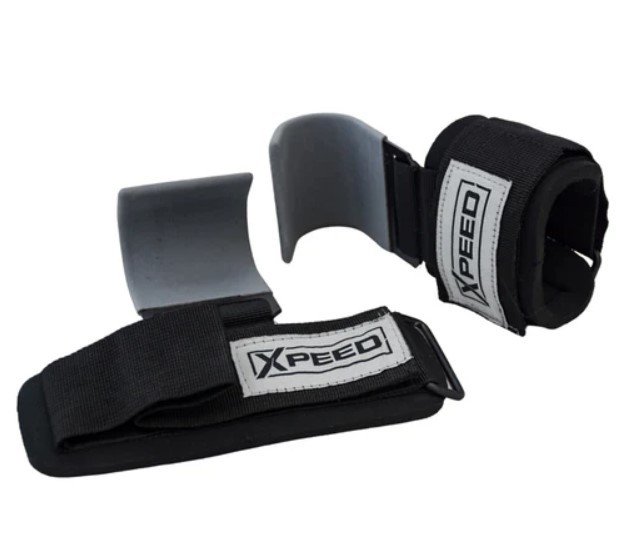
Weight-lifting straps are essential for many lifters, from novices to seasoned athletes. These simple yet powerful accessories can significantly enhance your lifting performance, help you break through plateaus, and reduce the risk of injuries. In this comprehensive guide, we will delve into everything you need to know about weight-lifting straps, including their benefits, types, how to use them properly, and tips for choosing the right pair for your needs.
Benefits of Weight Lifting Straps
Enhanced Grip Strength
One of the primary benefits of weight lifting straps is their ability to improve grip strength. As you lift heavier weights, your grip can often become the limiting factor. Straps help to secure the barbell or dumbbell in your hands, allowing you to focus on the targeted muscle groups without worrying about your grip giving out. Click here
Increased Lifting Capacity
By enhancing your grip strength, weight lifting straps enable you to lift more weight than you could with your bare hands. This is particularly beneficial for exercises like deadlifts, shrugs, and rows, where grip strength can be a significant limiting factor. With strips, you can push your muscles to their maximum eventuality and achieve lesser earnings in strength and size.
Reduced Risk of Injury
Lifting heavy weights with a compromised grip can lead to accidents and injuries. Weight lifting strips give fresh support and stability, reducing the threat of the barbell slipping out of your hands. This is especially important during high-intensity lifting sessions where maintaining proper form and control is crucial.
Enhanced Muscle Activation
By securing your grip, weight lifting straps allow you to focus on the targeted muscle groups more effectively. This can lead to better muscle activation and engagement, promoting greater muscle growth and strength development over time.
Types of Weight-Lifting Straps
Loop Straps
Loop straps are the most common type of weight lifting straps. They consist of a single loop that you wrap around your wrist and the barbell. Loop straps are versatile, easy to use, and suitable for most lifting exercises. They are ideal for beginners and intermediate lifters.
Figure 8 Straps
Figure 8 straps are designed to provide maximum security and support. They have a unique design that forms a figure-eight shape, which you loop around your wrist and the barbell. This design ensures that the barbell is securely locked in place, making figure 8 straps ideal for heavy lifting and strongman training.
Lasso Straps
Lasso straps feature a loop that you wrap around your wrist and a long strap that you wrap around the barbell. This design allows for a customizable fit and secure grip. Lasso straps are excellent for heavy lifting and can be adjusted to suit your preferences.
Hook Straps
Hook straps come with a metal or plastic hook that attaches to the barbell. They are easy to use and provide a secure grip without the need for wrapping. Hook straps are ideal for lifters with weaker grip strength or those recovering from hand or wrist injuries.
How to Use Weight Lifting Straps Properly
Step-by-Step Guide
- Position the Strap: Place the strap around your wrist, ensuring that the loop is snug but not too tight.
- Wrap the Strap: Wrap the free end of the strap around the barbell, ensuring that it is tight and secure.
- Grip the Barbell: Place your hands over the wrapped strap and grip the barbell firmly.
- Lift with Confidence: Perform your lifting exercise with the added support and stability provided by the straps.
Common Mistakes to Avoid
- Incorrect belting insure that the swatch is wrapped tightly around the barbell to help slipping.
- Overreliance on Straps: Use straps to enhance your grip, but continue to work on improving your natural grip strength.
- Improper Fit: Choose straps that fit comfortably around your wrist without causing discomfort or restricting blood flow.
Choosing the Right Weight Lifting Straps
Material
Weight lifting straps are typically made from cotton, nylon, or leather. Cotton strips are soft and comfortable but may wear out snappily. Nylon straps are durable and provide excellent support, while leather straps offer superior durability and a secure grip.
Length and Width
Choose straps that are long enough to wrap around the barbell multiple times for a secure grip. The width of the straps should be comfortable around your wrist and provide adequate support.
Padding
Some weight lifting straps come with additional padding for added comfort. Padded straps can help reduce pressure on your wrists and prevent chafing during heavy lifting sessions.
Brand and Quality
Invest in high-quality weight lifting straps from reputable brands. Quality straps are more durable, provide better support, and can withstand the rigors of heavy lifting.
Conclusion
Weight lifting straps are invaluable tools for enhancing your lifting performance, increasing your lifting capacity, and reducing the risk of injuries. By choosing the right type of straps and using them correctly, you can unlock your full potential and achieve your strength and fitness goals. Whether you're a beginner or an experienced lifter, incorporating weight lifting straps into your training routine can make a significant difference in your progress and overall lifting experience.
With the right knowledge and tools at your disposal, you're well on your way to mastering the art of weight lifting and achieving your desired results. So, grab a pair of weight lifting straps, hit the gym, and lift with confidence!


